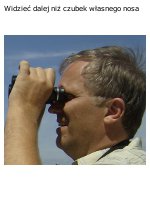Przy liniach wysokiego napięcia i trafostacjach, ale także wszędzie tam, gdzie są urządzenia na prąd, jak lodówka, występuje pole magnetyczne częstotliwości 50 Hz. Przy lodówce będzie to odległość 0,5 m od niej. Wystarczy wrócić do swoich zajęć i pole już na nas nie oddziałuje. Gorzej jest jak ktoś mieszka, albo chodzi, do żłobka, przedszkola, szkoły, które są położone niedaleko od linii WN. Narażony jest wtedy od 8 do 24 godzin na dobę. Niestety przy liniach WN pole o indukcji powyżej 0,2 microTesli występuje nawet do 150m od linii WN. Takie pole o wartościach 0,3-0,4 microTesli zwiększa, podwaja zachorowanie na takie choroby jak białaczka dzieci, czy choroba Alzheimera. Te choroby są najlepiej przebadane, inne jeszcze nie, ale można się spodziewać, że również inne choroby, jak białaczka dorosłych, depresja, rak mózgu mają większą ilość przypadków zachorowań w środowisku długotrwałego przebywania w takim polu. Oczywiście czas też zwiększa to zagrożenie. Inny jest wskaźnik dla 5 lat, inny dla 10 czy 15. Przy białaczce dzieci znaczenie ma także wiek dziecka, im młodsze tym wpływ większy. Ktoś może powiedzieć i często tak się dzieje, że białaczka dzieci to rzadka choroba i dla kilku przypadków rocznie nie warto poszerzać pasów wokół linii WN, gdzie nie wolno budować domów i szkół. Choroba Alzheimera to jednak jedna z 10 topowych przyczyn umierania. Jeśli w jakiejś większej miejscowości położonej przy linii WN umiera corocznie jedna osoba na alzheimera, to podwojenie albo potrojenie tej liczby staje się bardzo znaczące, a do tego dochodzą wszystkie inne choroby. Pisałem niedawno o tym mądrym rozwiązaniu w Holandii.
Linie WN w Holandii i w Polsce
Warto podobne rozwiązanie wprowadzić w Polsce.
O tym słynnym naukowcu pisałem już wcześniej w tym artykule: https://pamiec.home.blog/2018/08/05/thank-you-martin/
W czasach słynnego protestu w Kamionkach Pan Martin Blank napisał swoją opinię na temat projektu budowy największej w Europie linii WN przez osiedla mieszkaniowe. Warto się z nią zapoznać.
June 18, 2009
Ministry of the Environment, Poland (sent to minister@mos.gov.pl, info@mos.gov.pl )
RE: the proposed construction of power lines (2x 400kV + 2x 220 kV) near Kamionki
Dear Minister,
I have been asked by Krzysztof Kuklinski of Kamionki to write to you regarding the health effects due to the electromagnetic fields (EMF) in the proposed project. After stating my credentials as a scientist, I shall summarize the latest scientific information regarding health risks due to exposure to EMF from power lines. It should become clear from the recent scientific studies that the project, as planned, would constitute a potential health hazard of considerable magnitude. The project should be changed to minimize these risks.
I am a scientist with research experience in bioelectromagnetics, and a professor of physiology and cellular biophysics. • My degrees are: BS in chemistry, City College 1954; PhD in physical chemistry, Columbia Univ 1957; PhD in colloid science (an interdisciplinary mix of biology, physics, chemistry), Cambridge Univ 1959. I have published over 200 papers on EMF, cellular stress response, charge transport enzymes. • I am Associate Professor of Physiology and Cellular Biophysics, at the College of Physicians and Surgeons, Columbia University, and have taught Graduate Physiology and Medical Physiology to medical, dental, graduate students. I was Course Director in both courses. • My visiting appointments at other universities and research institutes include Cambridge-England; Weizmann Inst-Israel; UCalifornia-Berkeley; Monash UnivAustralia; Biophysics Dept, U Warsaw; Tata Inst-India; and Theoretical Physics Dept, Kyoto Univ, Japan. • I was a Liaison scientist for the US Office of Naval Research (ONR) in London, and directed a research program for ONR out of Arlington, VA. • I have done research in five different industrial laboratories in the US and Europe. • I have been President of Bioelectromagnetics Soc, Bioelectrochemistry Soc; Chairman of the Biology Div (Electrochemistry Soc); editor of scientific journals; reviewer of scientific papers for publication and proposals for funding; evaluating research laboratories for US government agencies; testifying as expert witness. In 2008, I was invited to address the Brazil Chamber of Deputies on EMF safety. • After evaluating the scientific evidence and potential health risks of exposure to EMF, I joined with other scientists in signing the Benevento Resolution (2006) and the related Catania Resolution (2002).
• I was one of the organizers of the BioInitiative Working Group (2006-2009), an international group of scientists who reviewed the science and safety aspects of EMF in a report that was published online in August 2007 at http://www.bioinitiative.org/report/index.htm The recommendations of this report were cited by the European Parliament (September 2009) as a reason to reexamine EMF safety standards.
Let me start my summary of scientific information about health risks of EMF in 1998, after the National Institute of Environmental Health Sciences (NIEHS) NIEHSEMF had conducted a year long review. In the Report to the US Congress (NIH publication No. 98-3981, 1998), the Director acknowledged the concerns about exposure to EMF in his statement that “…ELF-EMF exposure cannot be recognized at this time as entirely safe… passive regulatory action is warranted such as a continued emphasis on educating both the public and the regulated community on means aimed at reducing exposures.” He specifically recommended limiting exposure. „The NIEHS suggests that the power industry continue its current practice of siting power lines to reduce exposures and continue to explore ways to reduce the creation of magnetic fields around transmission and distribution lines without creating new hazards.” I have used bold print to emphasize the clear recommendation to reduce magnetic fields.
There can be no doubt that epidemiological evidence supports the increased health risk associated with EMF. Since the NIEHS review, two pooled analyses (Greenland et al, Epidemiology 11:624-634, 2000; Ahlbom et al, British J Cancer 83:692-698, 2000) have confirmed a statistically significant doubling of the risk of childhood leukemia when exposures exceed 3-4mG. The magnetic fields near Kamionki can be estimated to be comparable to the EMF levels cited by Bonneville Power Administration (1994) as about 58mG for a 230kV powerline and about 87mG for a 500kV powerline. The potentially harmful effects of fields of this magnitude would extend for a considerable distance and cause many residents, including children, to be exposed to EMF greatly in excess of 3-4mG.
In addition to the risk of leukemia in children, such fields have been shown to have adverse effects on the health of adults as well. A recent study from Switzerland (Hus et al., Amer J Epidemiology, January 2009) found that exposure to 220-380 kV powerlines is correlated with an increase in the incidence of Alzheimer’s disease and senile dementia. The risk of those living within 50m compared to over 600m, increased with duration of exposure over 5, 10 and 15 years, with a doubling of the risk at 15 years. These fields were probably in the range of 8-10mG, based on the Bonneville Power Administration data.
Low level EMF have also been shown to contribute to cancer cell growth through inhibition of the tumor suppressing action of melatonin (normally secreted by the pineal gland in the brain). The original study (Liburdy et al, J Pineal Research 1993), now replicated in several labs, showed that 12mG blocks the growth-inhibiting action of melatonin on human breast cancer cells, as well as the near-complete blockage of the
anticancer (chemotherapeutic) drug Tamoxifen. A field strength of 2mG had no effect, indicating that the threshold for harmful effect lies between 2mG and 12mG.
People do not sense these low magnetic fields, so they are believed to be without any health effect. That is not so. There are significant biological effects of EMF on many important cellular systems even at very low fields. Below is a table of measured thresholds on a variety of cells and sub-cellular components from our published studies at Columbia University.
Biological EMF Thresholds Biochemical Reactions EMF Reference (authors, year) Enzyme Reaction Rates Na, K-ATPase 2 – 3 mG Blank and Soo, 1996 cytochrome oxidase 5 – 6 mG Blank and Soo, 1998 Oxidation-reduction reaction rate Belousov-Zhabotinski reaction below 5mG Blank and Soo, 2001 Stress response, stimulation of DNA HL60, Sciara, yeast cells below 8mG Goodman et al, 1994 Breast cells (HTB124, MCF7) below 8mG Lin et al, 1998
These biochemical reactions are central to biological function. Electron transfer to cytochrome oxidase is a critical step in converting foodstuff into ATP, the fuel used to power all living cells. The Na,K-ATPase utilizes the ATP to drive the biological ‘pump’ that maintains the ionic composition of all living cells.
In the above table, the ‘stress response’ is a reaction to potentially harmful agents that is particularly important. Since it occurs in reaction to potentially harmful influences in the environment, such as high temperature, toxic metals, alcohol, etc, stimulation of the stress response by EMF can be seen as a direct answer by cells to the safety question. It shows that cells react to relatively low EMF levels as potentially harmful (Goodman and Blank, Cell Stress and Chaperones, 1998).
The stress response also demonstrates that EMF interacts with DNA at very low intensities. EMF has also been shown to cause damage to DNA at higher intensities. Since the stress response is initiated when the two strands of DNA come apart to start protein synthesis, it is clear that EMF leads to DNA chain separation. EMF interaction with DNA is important, because cancer is associated with changes in DNA (mutations) and a probable explanation of epidemiology results. The relevance of DNA damage induced by EMF is seen in a recent epidemiology study where children missing the genes needed to repair DNA were found to have a 4 fold greater incidence of leukemia from exposure to EMF as low as 1.4-1.8mG (Yang et al, 2008).
There are many recent studies showing effects of EMF on DNA, including the REFLEX project (2004) that is the work of 12 research laboratories in seven European countries. That report finds that both power and radio frequency EMF activate the stress
response and cause DNA breaks at relatively low exposures. A summary of the final report can be found online at http://www.verumfoundation.de/www2004/html/pdf/euprojekte01/REFLEX_ProgressSummary_231104.pdf A more recent summary and review of research can be found in the Bioinitiative report that was published online at http://www.bioinitiative.org/report/index.htm Scientific papers (e.g., Lai and Singh, 1995) point to links between EMF exposure and damage to DNA, so it is not unreasonable to see a connection between EMF and leukemia found in epidemiology studies. There is also research showing plausible mechanisms whereby weak EMF can stimulate DNA (Blank, Electromagnetic Biology and Medicine, 2008) and initiate the changes that can lead to disease.
From what we have learned about EMF interactions with cells, there is a strong scientific basis showing harmful effects on cells due to relatively low EMF. Therefore, there are good reasons for limiting exposure, especially of children. Because of the wide range of biological systems affected, the low response thresholds, the possibility of cumulative effects by repetitive stimulation and the inadequacy of exposure standards, it is urgent that the proposed powerline be moved to a distance where the anticipated magnetic fields will not pose a hazard to the community.
Sincerely yours, Martin Blank, PhD Associate Professor of Physiology and Cellular Biophysics Bioelectromagnetics Society President, 1997-1998

